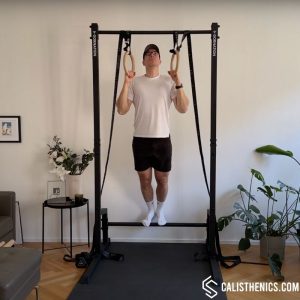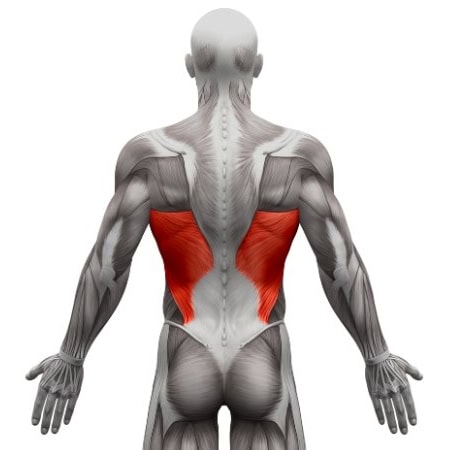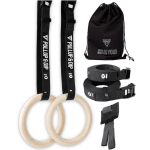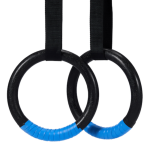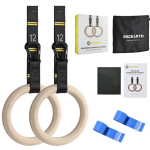Negative Ring Pull-up
How to do Negative Ring Pull-up?
The negative ring pull-up is a strength-building exercise that focuses on the eccentric (lowering) phase of a pull-up. This movement is particularly beneficial for building muscle control, grip strength, and endurance, making it a great progression toward full ring pull-ups and muscle-ups. Unlike bar pull-ups, rings introduce instability, requiring greater stabilization from the shoulders, core, and forearms. To ensure proper form, the athlete steps onto an elevated surface to reach the top position, rather than jumping, which can cause unnecessary swinging.
Steps to Perform a Proper Negative Ring Pull-Up
1. Set Up the Rings
• Adjust the rings to a height where you can comfortably reach the top position from an elevated surface.
• Ensure they are securely fastened to a sturdy anchor point.
2. Step onto an Elevated Surface
• Use a box, bench, or sturdy platform to get to the top pull-up position without jumping.
• Avoid sudden movements that might cause excessive swinging.
3. Grip the Rings in a Neutral Position
• Hold the rings with palms facing each other (neutral grip).
• Keep a firm grip, and avoid excessive wrist flexion or extension.
4. Engage Your Core and Lats
• Tighten your core and glutes to maintain a rigid body position.
• Retract and depress your scapulae (pull shoulders down and back).
5. Lower Yourself in a Controlled Manner
• Begin slowly extending your arms, lowering yourself as slowly as possible (3-10 seconds).
• Keep your elbows close to your body and avoid swinging.
6. Reach Full Arm Extension
• Lower yourself all the way down to a dead hang, maintaining control.
• Your shoulders should stay engaged (active hang) rather than fully relaxed.
7. Step Back Onto the Platform to Reset
• Avoid jumping back up; instead, use the platform to reset for the next repetition.
Benefits of the Negative Ring Pull-Up
✅ Accelerates Pull-Up Strength Development – Eccentric loading builds faster progress toward full pull-ups.
✅ Improves Grip & Forearm Strength – Essential for ring exercises and endurance.
✅ Enhances Shoulder Stability – Develops control and resilience in the shoulder girdle.
✅ Transfers to Advanced Skills – Helps in building muscle-ups and one-arm pull-up strength.
✅ Reduces Injury Risk – Strengthens connective tissues, tendons, and joints gradually.
Common Mistakes to Avoid
🚫 Dropping Too Quickly – Lowering too fast reduces strength gains and increases injury risk.
🚫 Jumping to the Top Position – Always use an elevated platform for stability.
🚫 Not Keeping Core Tight – Avoid swinging or excessive movement.
🚫 Losing Scapular Engagement – Keep shoulders active rather than fully relaxed.
🚫 Holding Breath – Maintain a steady breathing pattern for better control.
Tips for the proper execution of Negative Ring Pull-up
Lower as Slowly as Possible – The slower the descent, the greater the strength gains.
Engage Your Core – Prevents unnecessary swinging or loss of stability.
Control Your Grip – Squeeze the rings firmly to improve forearm endurance.
Keep the Rings Close to Your Body – Avoid letting the rings flare outward.
Breathe Properly – Inhale before lowering, and exhale steadily through the descent.
Muscles worked when doing Negative Ring Pull-up
Primary Muscles
•Latissimus Dorsi (Lats) – Controls the lowering phase and primary pulling strength.
•Biceps Brachii – Engaged throughout the eccentric phase for controlled descent.
• Upper Back (Rhomboids, Trapezius, Rear Deltoids) – Works to stabilize scapular movement.
Secondary Muscles
• Forearms & Grip Strength – Required to maintain control on the unstable rings.
• Core (Rectus Abdominis, Transverse Abdominis, Obliques) – Works to prevent swinging.
• Teres Major & Minor – Assists in shoulder control and movement stability.
Primary Muscle(s):
Secondary Muscle(s):
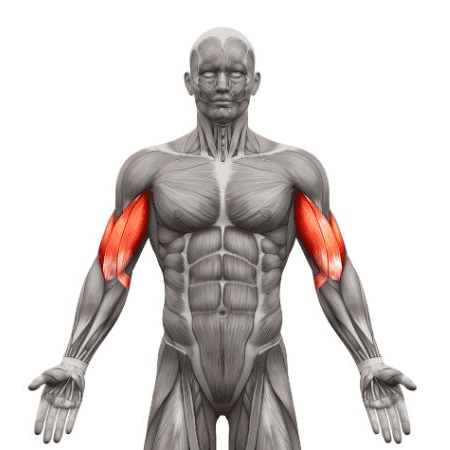
Biceps
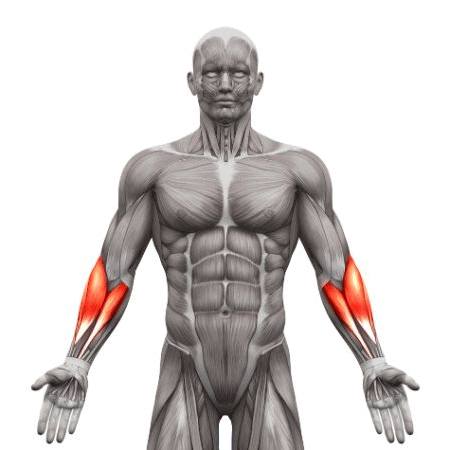
Forearm
Adjust the difficulty of Negative Ring Pull-up
How to make Negative Ring Pull-up harder?
How to make Negative Ring Pull-up easier?
How to make Negative Ring Pull-up harder?
To make Negative Ring Pull-up harder:
-
Increase the Time Under Tension • Aim for a 10-second descent, increasing time as strength improves.
-
Use a Weighted Vest • Adding weight challenges grip and pulling muscles even further.
-
Perform One-Arm Negative Reps • Lower with one arm while the other lightly assists, progressing toward one-arm pull-ups.
-
Use a False Grip • Engage a false grip (wrists flexed over the rings) to build strength for muscle-ups.
-
Pause at Different Points of the Descent • Hold at the midpoint and just before full extension to maximize muscle activation.
How to make Negative Ring Pull-up easier?
To make Negative Ring Pull-up easier:
-
Use a Resistance Band for Assistance • Loop a resistance band around the rings and place a foot inside for support.
-
Lower at a Faster Speed Initially • Start with a 2-3 second descent, gradually working up to 8-10 seconds.
-
Use a Slightly Higher Platform • A higher platform allows you to start with some support before fully lowering yourself.
-
Perform Negative Reps with Bent Arms • Instead of lowering all the way down, start by lowering halfway, then build up to full reps.
-
Train on a Fixed Bar First • If rings feel too unstable, practice negative pull-ups on a bar first, then transition to rings.

